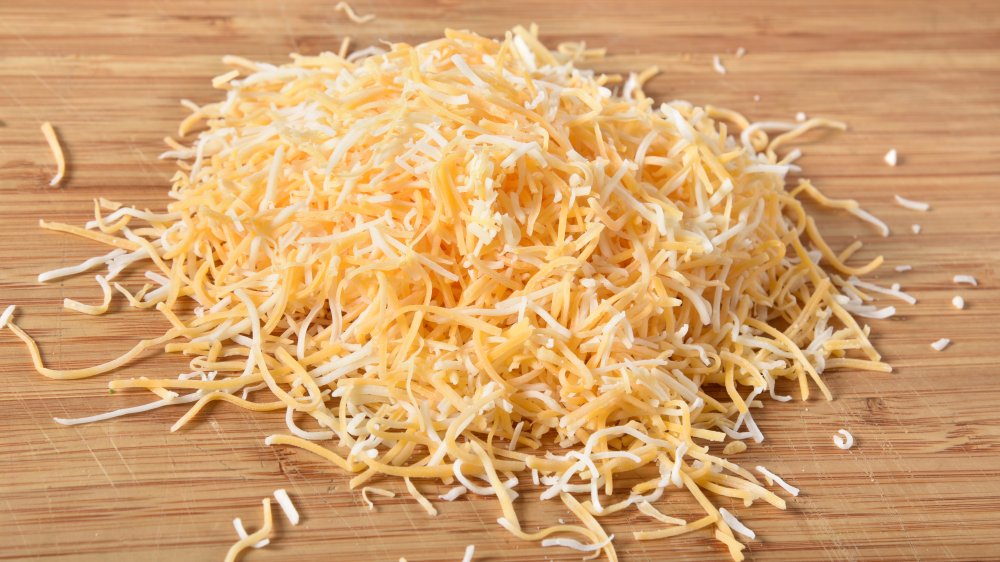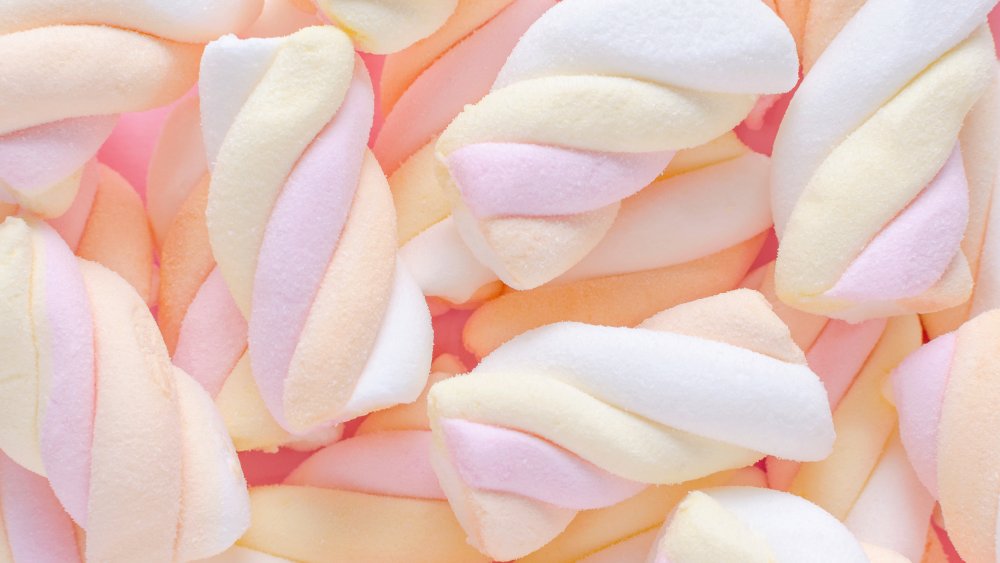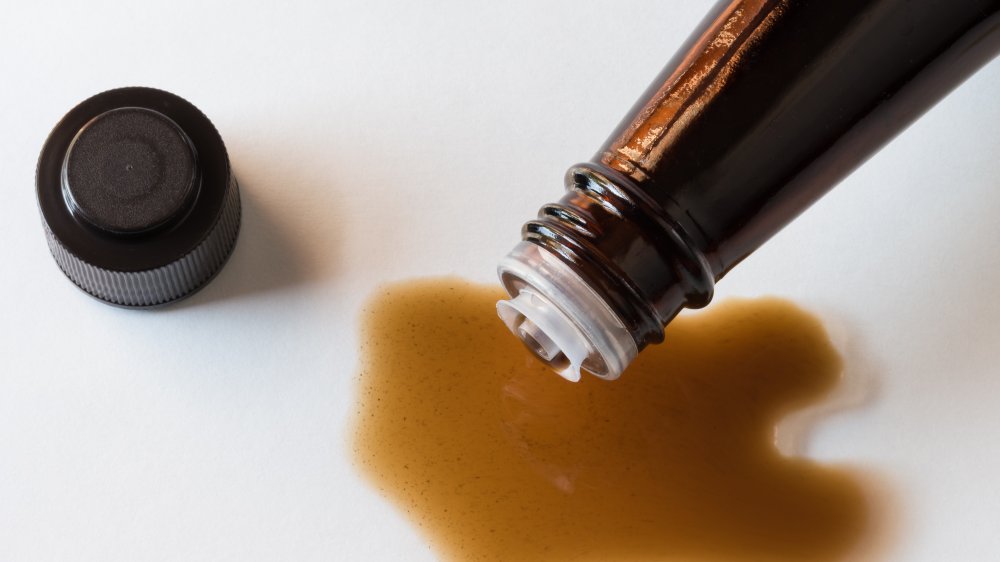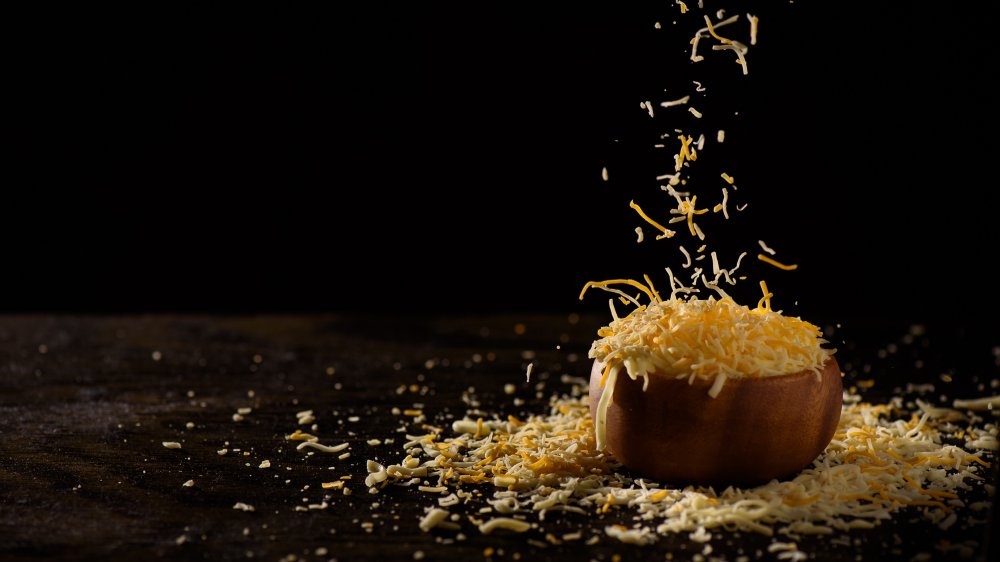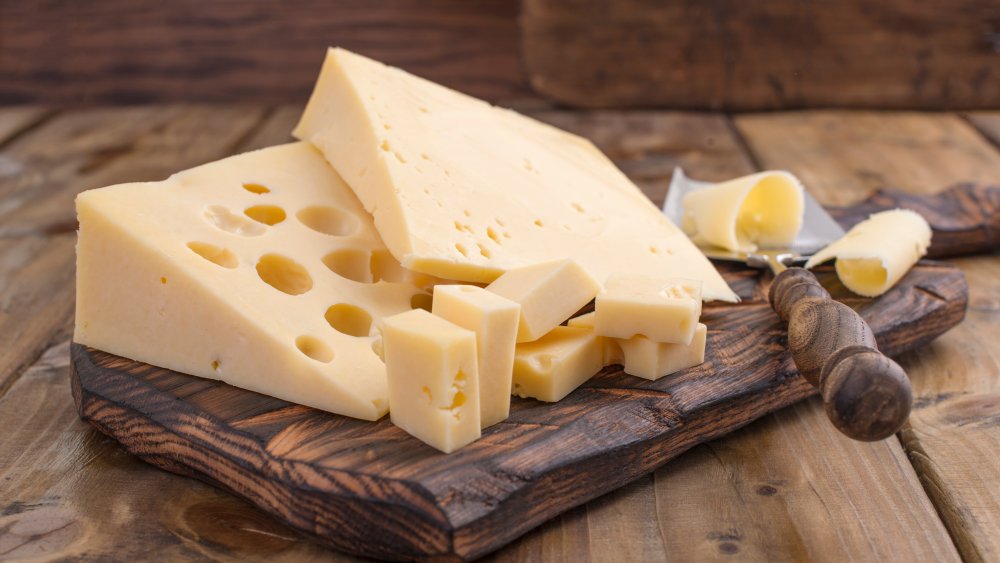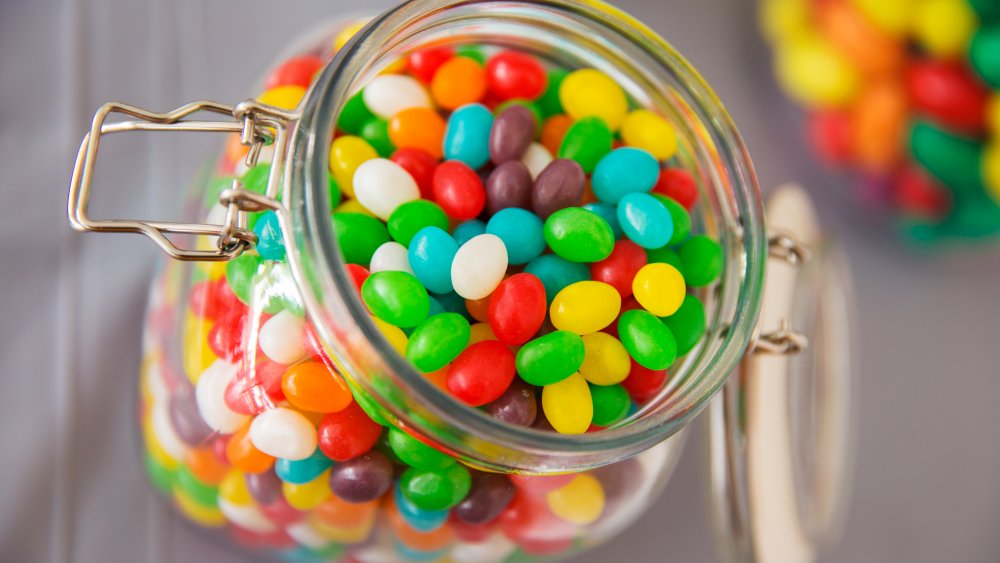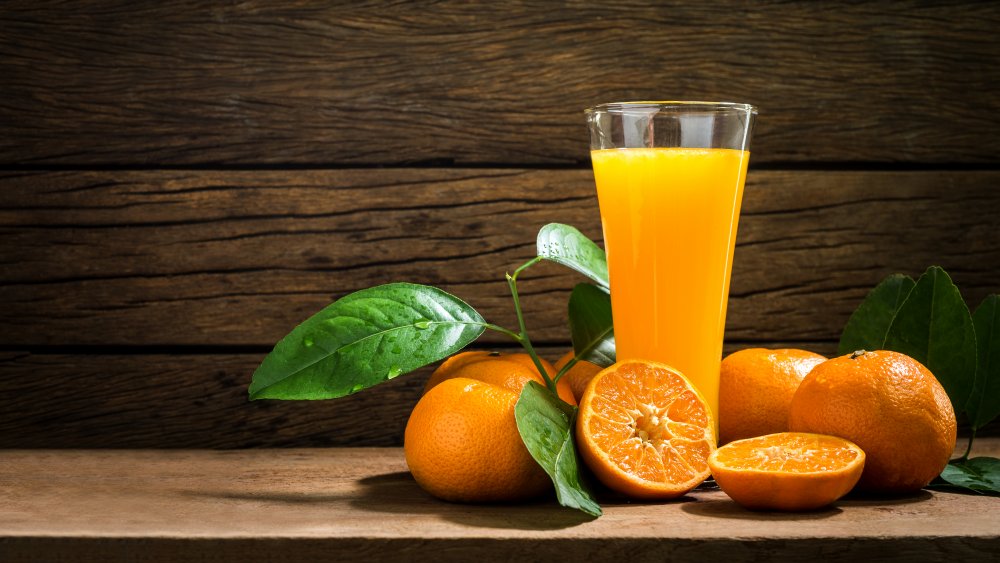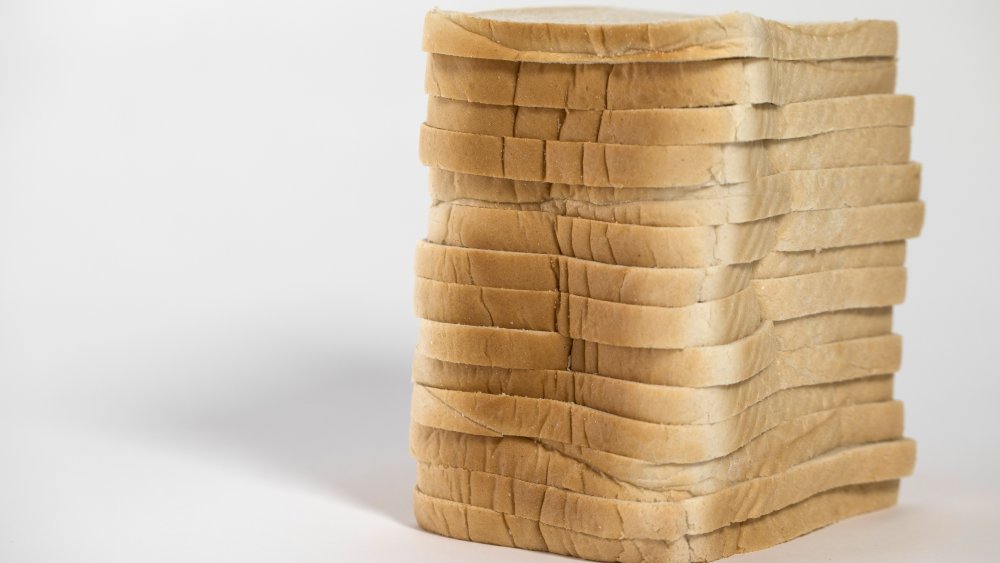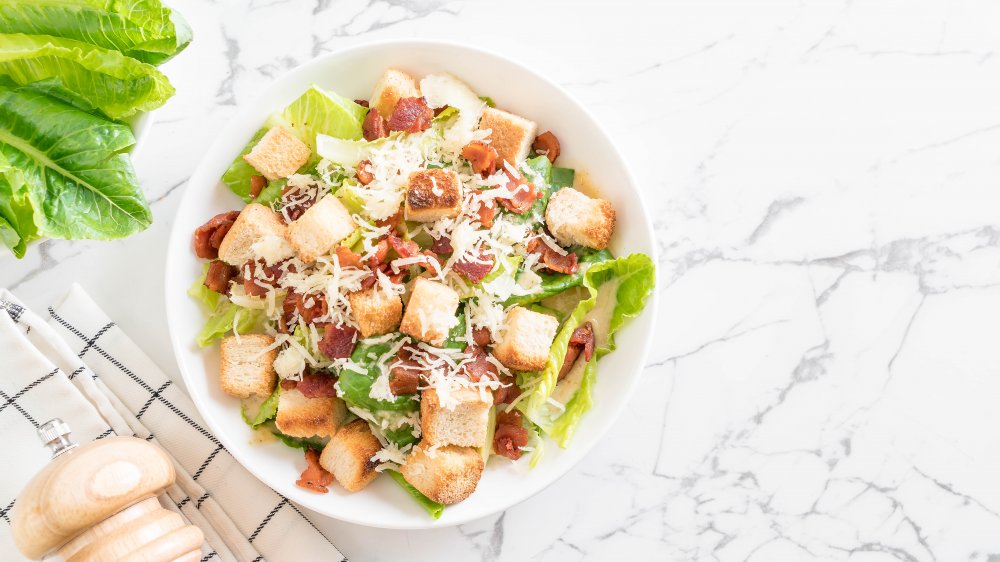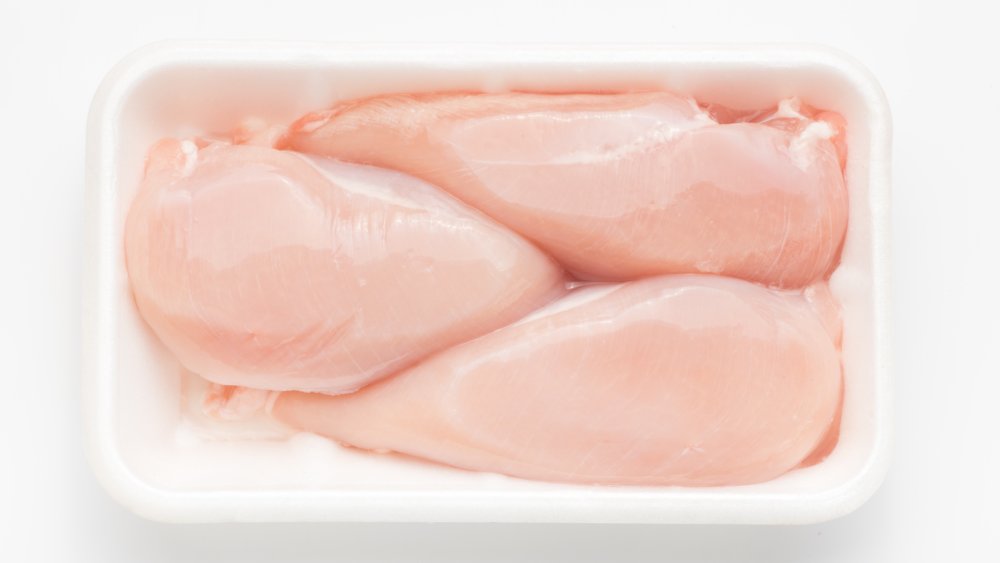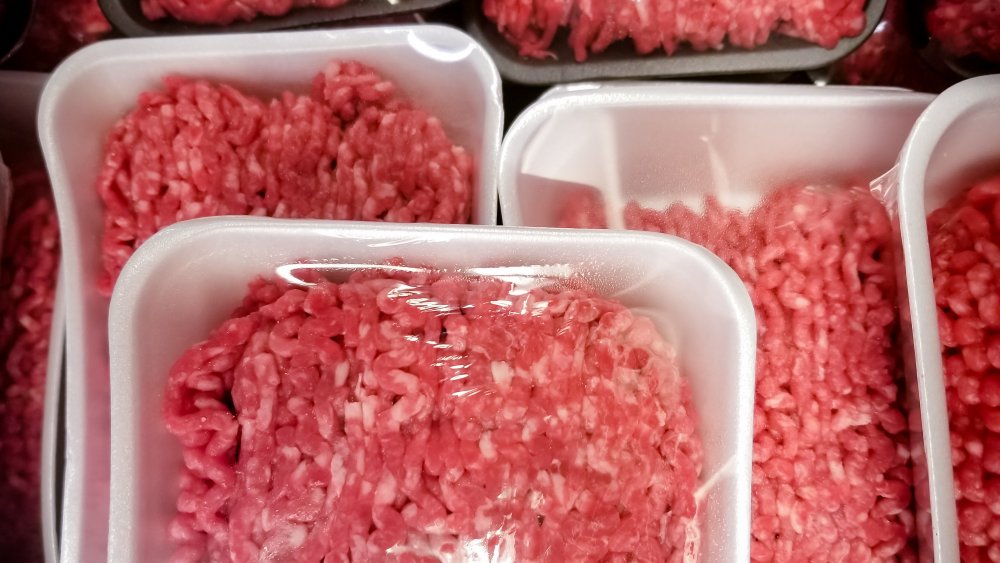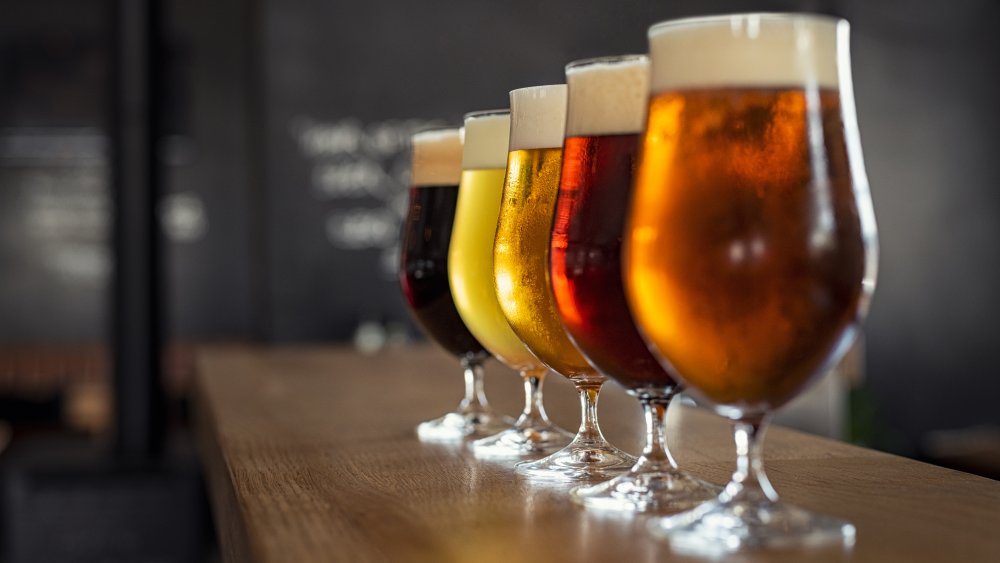Foods You'll Never Eat Again After You Know The Ingredients
Every time you go to the grocery store and throw something into your basket or your cart, you're doing so with some pretty strong faith in manufacturers. As consumers, we don't know what ends up in all those cans, boxes, and bottles, and most of us just have a sort of blind faith that what we're eating isn't cringe-inducing.
That it's not made with stomach-churning ingredients. That everything that goes into a product is perfectly normal, appetizing, and not-at-all icky.
Sorry, folks. Sometimes, that's just wrong.
There's a surprising number of foods — some of which we can almost guarantee you have in your kitchen or pantry right now — that are made with ingredients that sound like something out of a horror movie. They sound made-up, so cringe-worthy that they can't possibly be included in your favorite foods... but they are.
So, in the interest of full disclosure, let's talk about some of your favorite foods... which might become off-limits once you know what's really in them.
Marshmallows and Jell-O
It might seem strange that we put both marshmallows and Jell-O not only on this list, but on this list together. They're both childhood favorites after all, the stuff of summer afternoons and evenings around the campfire. Sure, they're delicious in a weird sort of way, but it turns out there's some seriously icky science behind what gives both of these sweet treats their distinctive texture.
And that's gelatin.
At one time, marshmallows were made from the marshmallow plant, but according to Scientific American, most commercial marshmallows are now made with gelatin, corn syrup, and sugar. Yum? Not exactly. As for Jell-O, that's got a ton of gelatin in it — Healthline calls it a "gelatin-based dessert," and adds that yes, gelatin is the primary ingredient.
So, what is gelatin? It's an ingredient that's made by taking the hides and bones of pigs and cows, boiling them, then drying them. The resulting product is then treated with a substance that's either strongly acidic or a strong base, then it's filtered to remove the collagen, or connective tissues. The collagen is dried and ground, and that's where gelatin comes from. Contrary to popular rumors, gelatin isn't made from animal hooves, but that doesn't really make it much better.
Worcestershire sauce
Worcestershire sauce is a must-have in many kitchens, but we're here to warn you that if you don't like fish, well, you might want to rethink that particular little bottle.
Lea & Perrins is the company that first made Worcestershire sauce, and they've been doing it since the 1830s. According to the Huffington Post, true Worcestershire sauce includes things like onions, molasses, and lots of seasonings, but the main ingredient isn't just anchovies, it's anchovies that have been fermenting in vinegar for around 18 months.
Say what now?
Worcestershire sauce happened when one of the early attempts by chemists Lea and Perrins was so awful that they put it in the cellar and left it there, hoping to forget about it. When they got ready to dump it months later, they tried it first... and found it had mellowed into something pretty delicious. Still, that doesn't change the fact that the core ingredient is the same fish you refuse to eat on your pizza... only they've been sitting in vinegar, bubbling away for a year and a half. You'll never be able to un-know that.
Shredded cheese and grated Parmesan
When it comes time to pick up some cheese, do you grab a block and shred it yourself, or do you opt for the bag of shredded cheddar and bottle of the grated Parmesan? You might want to rethink your shopping list, because there could be wood pulp in those packages.
More precisely, it's called cellulose, and according to Bon Appetit, it's often added to shredded and grated cheeses to prevent the product from turning back into a clump. And here's the thing — while there's a ton of sensationalized headlines claiming you're eating a byproduct of the wood industry (it's a plant fiber), that's not actually the problem. Cellulose is used in a ton of things, and it's perfectly safe and perfectly legal. No one wants clumpy cheese, after all.
So, what's the problem? For one, you're getting ripped off. Even though the package might claim you're buying 100 percent real Parmesan, you're absolutely not getting a product that's just pure Parmesan. And it's such a big deal that lawsuits have been filed over it. According to Eater, the company behind Castle Cheese brand was handed a $500,000 fine for mislabeling their cheese — essentially, they had added cellulose and cheddar to their "Parmesan" cheese, then just sort of forgot to put it on the label. It's no wonder — cellulose is an incredibly cheap filler that can allow companies to stretch their product and rake in the bucks. So, if you want the real thing? Just buy a brick and shred it yourself.
Cheese
Wait, not so fast! There's something gross that goes into making most cheeses, too, and buckle up, because this is going to get... surprisingly sad.
In order to make cheese, cheesemakers have to get milk to coagulate into curd. According to the New England Cheese Making Supply Co., that's sometimes done using an enzyme called rennet. And, rennet comes from an enzyme called chymosin, which is present in the lining of the stomach of a goat, lamb, or calf... but not any goat, lamb, or calf.
It's only able to be harvested while the animal is still on an all-milk diet, which means they're young enough to still be nursing. Chymosin, says The Spruce Eats, is what allows baby animals to digest their mother's milk. While they also note that the industry doesn't just slaughter babies wholesale for their rennet, it's usually harvested after the animal is slaughtered and sold for its meat, as a way of using as much of the animal as possible.
There are different types of rennet out there, including vegetable, plant, and genetically-engineered, but the FDA doesn't require cheesemakers to label their product with the type of rennet they use. Sure,everyone loves some cheese and crackers, but... ew.
Jelly beans
Who doesn't love jelly beans, the stuff of Easter baskets and candy dishes throughout the spring? They're shiny little nuggets of sugary flavor, and while we're talking about shiny, let's look at where that shiny comes from.
The coating of most jelly beans is actually called shellac, and if that rings some mental bells that make you think of woodworking class in high school, there's a very good reason for it — it's the same stuff that's been used to add a clear finish to wooden furniture for years (via the Natural Handyman)... along with setting jewels and repairing broken pottery.
That's got your attention, right? We're not done yet.
According to Mental Floss, shellac comes from the female lac bug. The lac bug drinks tree sap, then secretes a resin that's harvested from where it's deposited onto trees. It's processed, dissolved in ethanol, and then sprayed on everything from hardwood floors to jelly beans. That's not the only sweet it's used in, either — it's often an ingredient in confectioner's glazes, and if you see an additive identified by the number E904, you're eating bug secretions.
Orange juice
Oranges aren't in season year-around, but orange juice is always around... how the heck does that happen?
Alissa Hamilton, author of Squeezed: What You Don't Know About Orange Juice and fellow with the Institute for Agriculture and Trade Policy says (via The New Yorker) that both orange juices labeled "from concentrate" and "not from concentrate" have a trick up their sleeve: flavor packs. Flavor packs are added to the orange juice to add, well, flavor and scent, and here's her explanation of what they are:
"Flavor packs are fabricated from the chemicals that make up orange essence and oil. Flavor fragrance houses, the same ones that make high end perfumes, break down orange essence and oils into the constituent chemicals and then reassemble the individual chemicals in configurations that resemble nothing found in nature."
For example, one of the chemicals in your orange juice is ethyl butyrate, and there's a lot of it added to get that fresh-squeezed orange juice smell. Why are these necessary? Because, Gizmodo says, orange juice is made by squeezing oranges and then removing the oxygen to prolong the amount of time it can be stored before it's bottled. But removing oxygen removes flavor, so they have to put it back somehow. Enter, the fragrance packs — which, incidentally, is what makes one type of orange juice taste different than the competitors. Cringe.
Packaged bread
When something's really revolutionary, some people — some people of a certain age, at least — say that it's the best thing since sliced bread. Sliced bread is amazing, but there's a catch.
Ever wonder why commercially-produced loaves of bread can sit on the grocery store shelf for so long, and not get moldy? According to Vice, that happens because most bread produced on a large, commercial scale contains something called L-cysteine... and here's where it gets gross.
L-cysteine is completely natural, and seriously, the next time someone gets annoying about only eating all-natural ingredients, give 'em this little tidbit. It's naturally occurring, for sure, and it's most commonly synthesized from human hair. Oh yea. That's right. The same human hair you'll send a whole plate back to the kitchen over? You might just be eating it in your sandwich, because Vice found that one of the most common sources are hair salons in China. Hair clippings are gathered up, dissolved in acid, and the L-cysteine is removed and shipped off to commercial bakeries.
There's also the chance it may have come from pig bristles, cow horns, or duck feathers, but... that's not really much better, is it? The moral of the story might be that you might want to opt for fresh bread from the bakery... even if you have to slice it yourself.
Caesar salad
Let's be honest: the best part about a salad is the dressing, and Caesar salad is great, because usually, it's all covered in dressing. It's got that distinctive, tangy taste, and, well, if you're a vegetarian, you're going to want to stop ordering this at a restaurant. Like... ASAP.
That tang you love in your Caesar salad dressing? That comes from Worcestershire sauce and anchovies. Yep, that's right, the same little fishies that make you want to give up pizza forever when you see them staring up at you with their blank, unseeing eyes. Those are the ones.
Even Kraft warns that their Caesar dressing comes with fish as a potential allergen and in their case, it's in the form of anchovy paste. Martha Stewart's Classic Caesar Salad calls for 4 anchovy fillets, and as for The New York Times's classic version, you guess it: at least a few tablespoons of minced anchovies, and hey, more if you like!
But... it's so good!
Enhanced chicken and beef
Packaged meat is literally why we all eat meat, because most of us wouldn't be interested if we had to get it directly from the source. But here's the thing: have you ever looked at how meat is labeled? If you've ever seen the word "enhanced" or "brined" on a package, or claims that "natural flavor" was added, you might want to rethink your purchase.
According to Premier Foods Group, the practice of "injecting" or "plumping" meat is something of an industry standard. It's basically the process of injecting meat with a saltwater solution (that usually includes a bunch of other ingredients), and the reasoning is the belief that it makes it stay fresher and juicier for longer.
There's a big "but." Some studies have found this increases the weight of the chicken by as much as 30 percent, and most grocery stores charge by weight. Sneaky, sneaky! It's so widespread that they estimated that every year, consumers spend around $2 billion on that salt water solution.
Know Your Beef says there's another problem — the added sodium. They found that a 100 gram piece of beef that's been treated with a salt solution can contain up to 1800 mg of salt. Given that you're only supposed to have between 1500 and 2300 mg of salt per day, well, you do the math.
Packaged meat
You might not think twice about grabbing a package of ground beef for Taco Tuesday, but according to ABC News, there's a good chance it might have been treated with carbon monoxide. We all know how dangerous that is when it's in our homes (you've checked the batteries on your carbon monoxide detector, right?), but what about when it's in our food?
The carbon monoxide itself is actually harmless, it's such a small amount. But there's still a danger. It's used because it helps keep that bright red color that we associate with fresh meat even though it's been exposed to oxygen, which could turn it gray. The problem is that it helps it keep that color even well past the point where it's actually spoiled. And that means it's entirely possible you might pick up some old meat at the grocery store without ever knowing it thanks to that sneaky ingredient... and that's not ok.
The technical term for it is "modified atmosphere packaging," and according to a study led by the Laboratory of Food Quality and Food Safety in Algeria, the gases used (which also include carbon dioxide and nitrogen) "supports the growth of spoilage bacteria with negative effects on meat flavor and texture." They also note that many countries have banned the practice of using carbon monoxide, and that's food for thought.
Anything unusually red
If you've ever grabbed a quick snack and thought, "Well, that's a color that doesn't occur in nature," you might be surprised... especially when it comes to red.
Red got all kinds of attention when Starbucks announced they were going to stop using a particular kind of red food dye, says LiveScience, but that's not the only place you could find it. That particular dye was controversial because it was made from cochineal, which, in turn, is extracted from a bug of the same name.
This dye has been around for a shocking amount of time, as it was first discovered by the Aztecs, who used it to dye fabrics. Fast forward 500 years, and the bugs are still harvested in Peru (as well as the Canary Islands), and then they're dried, crushed, and treated with an alcohol solution to make the dye. Around 70,000 bugs go into each pound of dye.
Some people are allergic to the dyes, so that means the FDA requires manufacturers to specifically list cochineal extract when it's an ingredient. (It also might be called "Natural Red 4", or "Carmine.") If you don't have an allergy it's not harmful at all, but... it's still pretty gross.
Beer
No, say it ain't so!
Yes, it's true — there's something in beer that's not only pretty gross, but that makes many brews completely unsuitable for vegetarians. The ingredient in question is called isinglass, and it's essentially a gelatine made from the swim bladder of fish.
It's been used for a long time — since the 19th century, according to the BBC. It's basically added to beers to help clarify them, because everyone likes a clear, brightly-colored pint, no matter what kind of beer you prefer. The bonus of using isinglass is that it doesn't change the taste or the smell of the beer, but that's little comfort to either vegetarians, or people who like their beer fish-free.
This is one thing that might be changing, though, as brewers are looking for new, less icky methods of clarifying beer. Take Twisted Barrel Brewery. When they hit the scene in 2014, brewery owner (and longtime vegetarian-turned-vegan) Tim Bosworth refused to use the ingredient, saying, "Nobody really wants to advertise that they filter their beer through a dead fish."
Chewing gum
Chewing gum is definitely one of those love-or-hate things, and after you find out just what you're chewing on, it might fall into the "hate" category.
The main part of gum is the gum base, and that's essentially the part that makes it rubbery and chewable. According to NDTV, that's such a basic component of what makes gum, well, gum, that manufacturers don't have to specify how it's made. And sometimes, it's made with lanolin.
What the heck is that? Lanolin is a waxy substance secreted by the wool of sheep. Weren't expecting that, were you? According to Healthline, it's the sheep version of something humans have, too, and that's called sebum. Have you ever noticed that your nose might suddenly feel particularly waxy, shiny, or oily? That stuff is sebum.
When it comes to sheep, they excrete lanolin as a sort of natural type of wool conditioner. It helps keep their wool waterproof, and when sheep are sheared and wool is processed, it's removed from the wool by putting it through a centrifuge. It's a common ingredient in things like lotions and moisturizers... and chewing gum. It's... pretty safe, although health officials warn you shouldn't swallow a lot of it, because it can cause lanolin oil poisoning. It's also possible that if you're sensitive to wool you might have an allergic reaction to lanolin, so you might want to put the brakes on that chewing gum habit.
